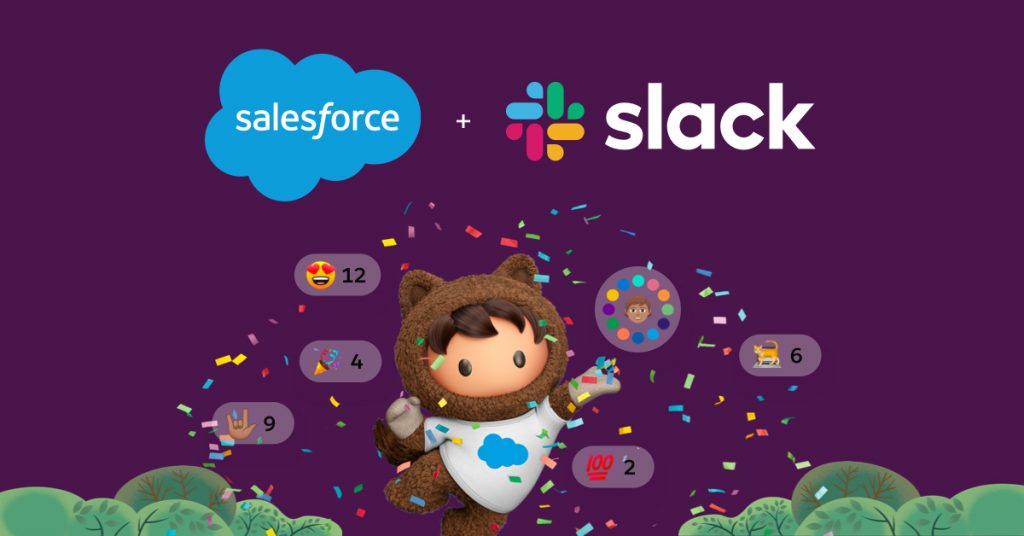If your enterprise is one of the many around the world adjusting to a new digital-first, work-from-anywhere environment, you’re well aware of the problems in preserving technology and promoting communication outside of the traditional office setting.
After two years, it’s impossible to refute the Salesforce platform’s power and versatility, Check the salesforce trends in 2022 – which has proven to be a vital resource for organizations as they grow to meet evolving customer and employee needs.
For 2022 and beyond, Salesforce technology will continue to evolve in new ways, so here’s what to expect in 2022:

In 2022, as businesses transition to hybrid work culture, Slack First Customer 360 will make it even easier. Salesforce purchased Slack, and the merged enterprise now permits teams to stay interconnected, effective and get the job done from anywhere, all while holding a single source of facts for their firm and a single shared perspective of the client.
With Slack First Customer 360, you can now achieve more transactions, select tickets quickly, execute campaigns more effectively, and gain sophisticated AI-driven insights on client data. Thanks to the new pre-made integration, every department may intercommunicate via channels that link teams and streamline workflows created around its data.
A new era in healthcare has begun, primarily post-covid. Customers today want a more custom experience, while healthcare providers are looking for intelligent platforms to improve results and save costs. Salesforce Health Cloud has it all, including seamless connectivity across care teams, giving them a 360-degree picture of each patient on a single, HIPAA-compliant platform.
From the time a patient is admitted until discharge, the platform instantly connects them to treatment and works on socioeconomic determinants of health to enhance outcomes and better fulfill their needs and preferences.
There are 4 main offerings in Salesforce Health Cloud
Companies can construct blockchain networks, workflows, and apps by matching the power of Salesforce Lightning with Blockchain – a cornerstone for the digital era. Businesses may use blockchain across many industries for asset monitoring, credentialing, verification, and authenticity of items. it is one of the major salesforce trends.
Reducing the gaps between distinct workflow stages has gotten increasingly difficult as teams have become more spread, and any delays result in lower productivity, lower client satisfaction, and revenue loss. The secret sauce for swiftly configuring, deploying, and maintaining complex and flawless corporate workflows is a flow orchestrator.
Maximizing user experience creates multi-user, multi-step automated business processes with clicks rather than code. Flow Orchestrator may bridge the large gap in corporate workflows by arranging various flows into steps and multiple steps into stages, resulting in greater productivity, happy customers, and money.
Salesforce Einstein, powered by artificial intelligence, allows computers to predict behavior based on accurate facts and data. Salesforce Einstein, powered by Tableau, effectively anticipates customer behavior and provides data sets and business intelligence to make informed business decisions, as customer data has become increasingly important for businesses. Salesforce has announced 3 major innovations in 2022
Slang and spontaneous language are commonly used in customer contacts. Einstein will be equipped with Natural Language Processing (NLP) in 2022, allowing it to recognize common patterns and insights from client interactions.
Finding customer and company information might feel like hunting for a needle in a -haystack for sales and marketing personnel. Einstein Relationship Insights will function as a magnet, search through the data and effortlessly pull the relevant information.
Marketers need to know which clients are responding to their campaigns the most. With the use of AI and cross-cloud data, Einstein Engagement Scoring will assist marketers in identifying those customers.
Salesforce had been managing workloads on its own server infrastructure until recently. As the firm grew and the volume of transactions increased at stratospheric rates, Salesforce had to migrate some of its workloads to public cloud servers like AWS, Google, and others. While doing so, the company continued to host client data on its own servers.
Salesforce has now made it possible for clients to manage their workloads in public cloud environments. Customers will be able to deploy their workloads in any cloud environment they choose, thanks to Hyperforce’s design. Clients who use Hyperforce will be able to store any of their data, including Customer360 data, on any public cloud platform they are familiar with. Customers will also benefit from increased scalability, which Salesforce-owned server workloads may have previously limited.
Data drive any firm’s plan, and Tableau CRM makes crafting successful business strategies and finding hidden opportunities a breeze. Tableau, formerly known as Einstein Analytics, offers actionable insights and AI-based analytics to determine the optimal course of action in any business matrix.
It aids business strategists in removing noise from an avalanche of data, detecting Salesforce trends that might otherwise go unnoticed, and providing a simple and actionable methodology. Tableau is the most complete and in-depth analytics tool available, with the ability to scale as your data strategy changes.
Einstein, Salesforce’s industry-leading AI, is designed to make it simple to integrate data into a company’s culture, uncover insights, and improve outcomes. It assists data scientists, analysts, and anyone who works with data.
These were a few of the most notable Salesforce trends to watch in 2022. The adoption of cloud-based platforms and automated technologies will only grow in the next few years. As a Salesforce user, it’s critical to be aware of these Salesforce trends and adjust the CRM platform’s functionality to achieve the greatest results.